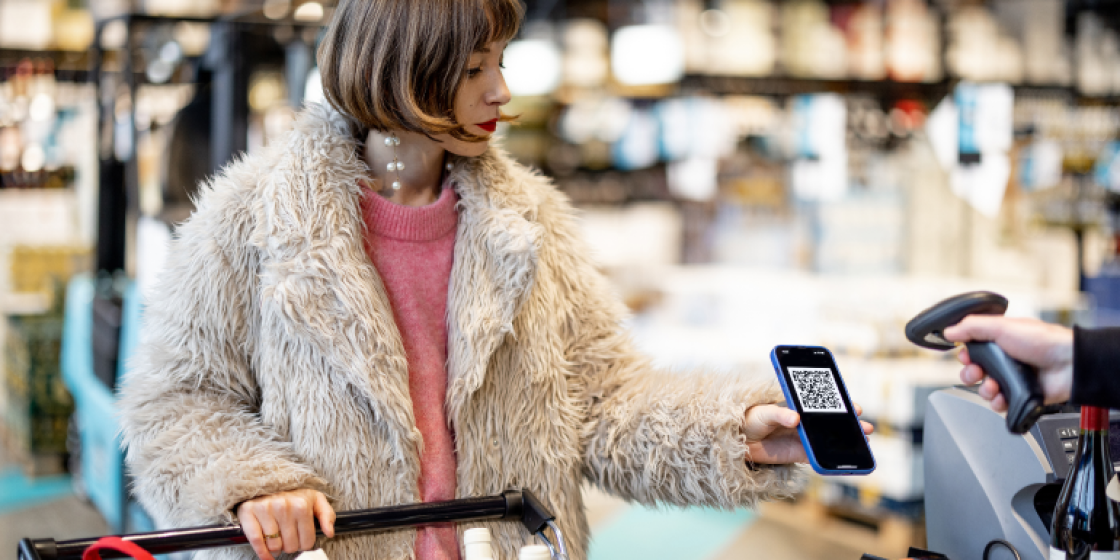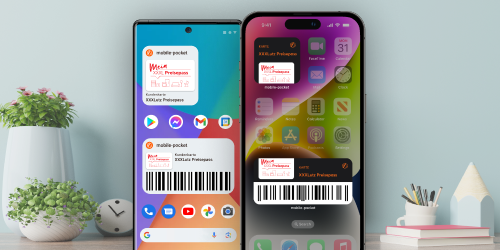Why payment and banking apps have the potential to completely replace customer cards

Es zeichnet sich ein klarer Trend ab: Bezahl- und Banking-App ersetzen physische Kundenkarten. Digitale Kundenkarten bieten eine Reihe von Vorteilen, die traditionelle Plastikkarten in den Schatten stellen. In diesem Beitrag werfen wir einen Blick auf die Argumente die darauf hindeuten, dass physische Kundenkarten in naher Zukunft überflüssig werden.
1. Growing use of mobile wallets
The popularity of banking and wallet apps has increased significantly in recent years. More than 2 billion people worldwide use mobile payment & banking apps (Business of Apps Mobile Payments App Revenue and Usage Statistics 2024). The transaction volume of mobile payments reached USD 2.3 trillion in 2023. The use of wallet apps such as Apple Pay, Google Wallet and Samsung Pay has also seen a considerable increase. According to Statista, digital payments such as Apple Pay, PayPal or Alipay are expected to be the fastest growing payment method worldwide (Statista, Mobile payments with digital wallets). These figures show that mobile payment has now become an integral part of everyday life for many people. Wallets not only offer consumers the opportunity to pay, but also increasingly integrate loyalty cards, which reduces the dependency on physical cards.
2. Customer preference for digital solutions
One of the main incentives for customers to replace physical cards with digital ones is convenience. People who use a payment or banking app no longer want to carry a wallet. Digital loyalty cards in payment apps allow consumers to manage all their cards in one place. Switching between the payment function and customer card is seamless, which speeds up and simplifies the entire checkout process.
This is an important insight for financial service providers: payment apps that can store digital loyalty cards benefit from higher user loyalty, offer users a better overall experience and benefit from the fact that 94% of companies are focusing on customer loyalty in the current economic situation and are increasingly investing in digital loyalty programmes (Antavo Global Customer Loyalty Report 2023).
3. Security creates trust
The integration of digital customer cards is a further step towards fully digital financial solutions. For financial institutions, this offers the opportunity to position themselves as an innovative and modern service provider that offers its customers advanced and convenient solutions. Physical customer cards can easily be lost or stolen. Digital customer cards in banking apps, on the other hand, use security mechanisms such as encryption and two-factor authentication to protect access. This strengthens trust in the payment app, which further increases user loyalty.
4. Reduction of costs and environmental impact
In addition to convenience and security, the environmental aspect also plays an important role. Billions of physical customer cards are produced worldwide every year. These cards are usually made of plastic, which has a negative impact on the environment. Although CO2-neutral dispatch of the customer card offsets the emissions caused, the environmental impact does not have to be.
By switching to digital cards in payment apps, financial service providers can make an important contribution to reducing plastic waste and at the same time help companies to reduce their expenditure: the production, distribution and administration of physical cards generates significant costs for companies, which are reduced by digital alternatives.
5. Value-added services that lead to business models
The more functions an app offers, the more often users access it. By combining payment services, loyalty programmes and other features, the payment or banking app becomes a central companion in users' everyday lives. This increases the time spent in the app and reduces the likelihood of users switching to competing platforms.
Additional revenue can be generated through partnerships with retailers and service providers or platforms such as mobile-pocket. Retailers benefit from stronger customer loyalty and higher visibility, while payment and banking app operators benefit from commissions or fees for the integration of loyalty programmes.
Valuable customer data can also be collected through the integration of digital loyalty cards. Financial service providers can thus provide their customers with customised offers and product recommendations, which in turn increases cross-selling and up-selling potential.
Conclusion
Those who focus on the integration of customer cards and bonus programmes at an early stage not only increase customer satisfaction, but also open up new business potential.
The payment or banking app becomes an all-in-one financial tool that goes beyond mere account management and creates real added value in everyday life. Given the predicted increase in the use of banking and wallet apps, it is only a matter of time before physical customer cards are completely replaced.
It's time to set the course for meaningful digital experiences and inspire with innovative solutions. We are happy to help. Get in touch with us!





